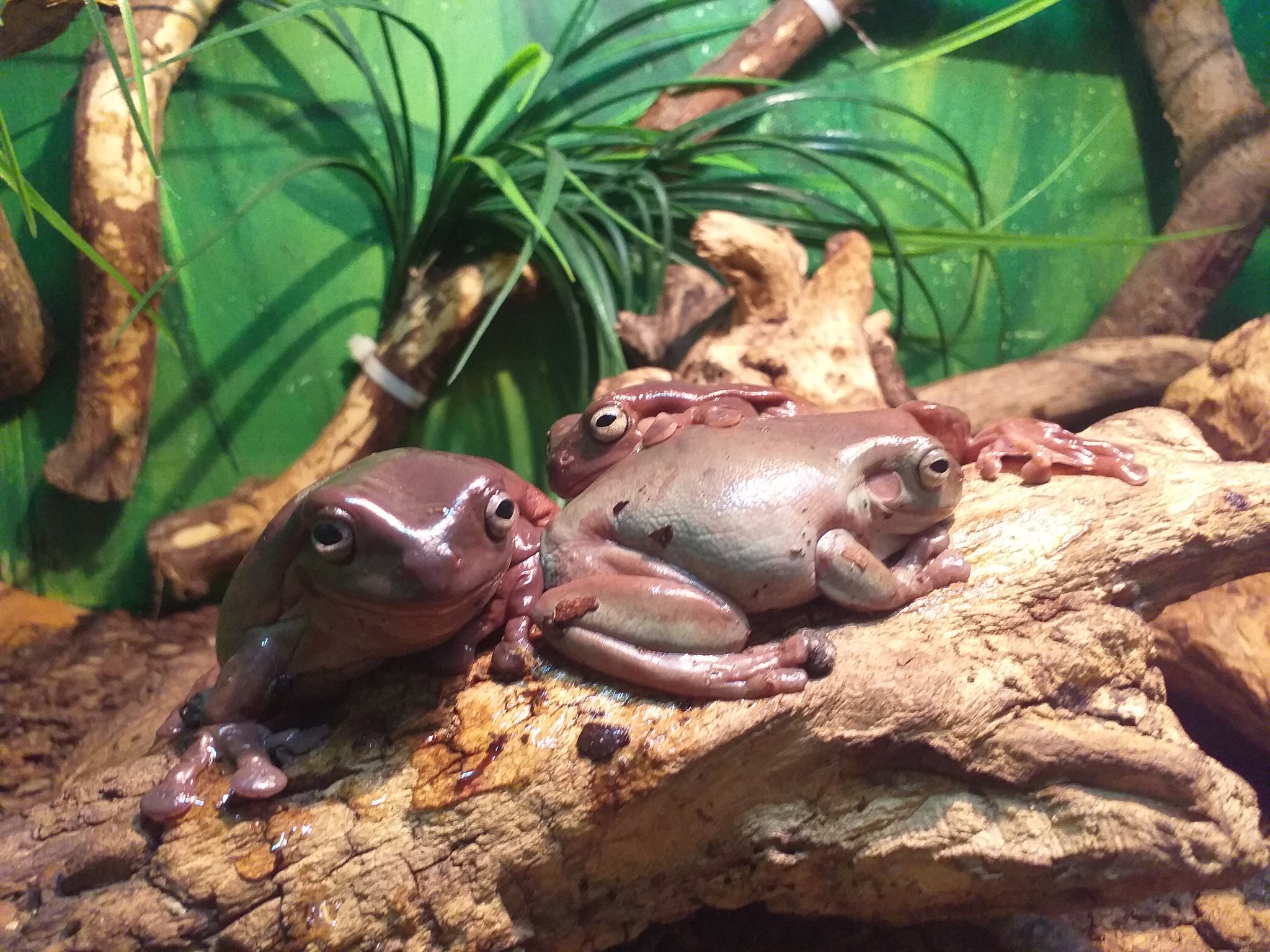Amphibians Awareness Week
May 5-11, 2024 is marked "Amphibians Awareness Week". Mykolaiv Zoo continues to spread information about this extremely important in ecosystems, but very vulnerable group of animals and show which amphibians can be seen in our exhibit.
Fact four: reproduction of amphibians.
In the life cycle of amphibians, four stages of development are clearly distinguished: egg, larva (tadpole), period of metamorphosis, imago (adult).
Eggs of amphibians, like fish eggs, do not have a waterproof shell. For the development of the egg, its constant moisture is necessary. The vast majority of amphibians spawn in freshwater, but there are exceptions: common caecilians, amphiumas, giant salamanders, and some other amphibians spawn on land. Even in these cases, the eggs need high environmental humidity, the provision of which falls on the parents. Known species that carry eggs on their bodies: the female shrub frog attaches them to her abdomen, and the male common midwife toads wrap a string-like clutch around their hind legs. The care for the offspring of the common Surinam toad looks especially unusual – the fertilized roe is pressed by the male into the back of the female and the latter carries it on her body until younglings hatch from the roe.
Frog larvae are called tadpoles. At first, it looks like a bony fish larva. The tadpole breathes first with external gills located on the sides of the head. They are soon replaced by internal ones, imperceptible from the outside (gill slits are cut through). A tadpole has one circulatory circle and a two-chambered heart. A lateral line is visible on his skin. So, amphibian larvae have a lot in common with bony fish. The tadpole grows quickly, and after a while limbs begin to develop. At first, only the rear limbs are visible from the outside, while the front ones are hidden under a fold of skin that covers the gill slits. After some time, lungs appear, the heart becomes three-chambered. The tail gradually shortens, and the front limbs become noticeable. A tadpole turns into an adult amphibian...
In the photos taken today in Mykolaiv Zoo, you can see an exhibit with Australian green tree frog (Litoria caerulea).

.jpg)
.jpg)